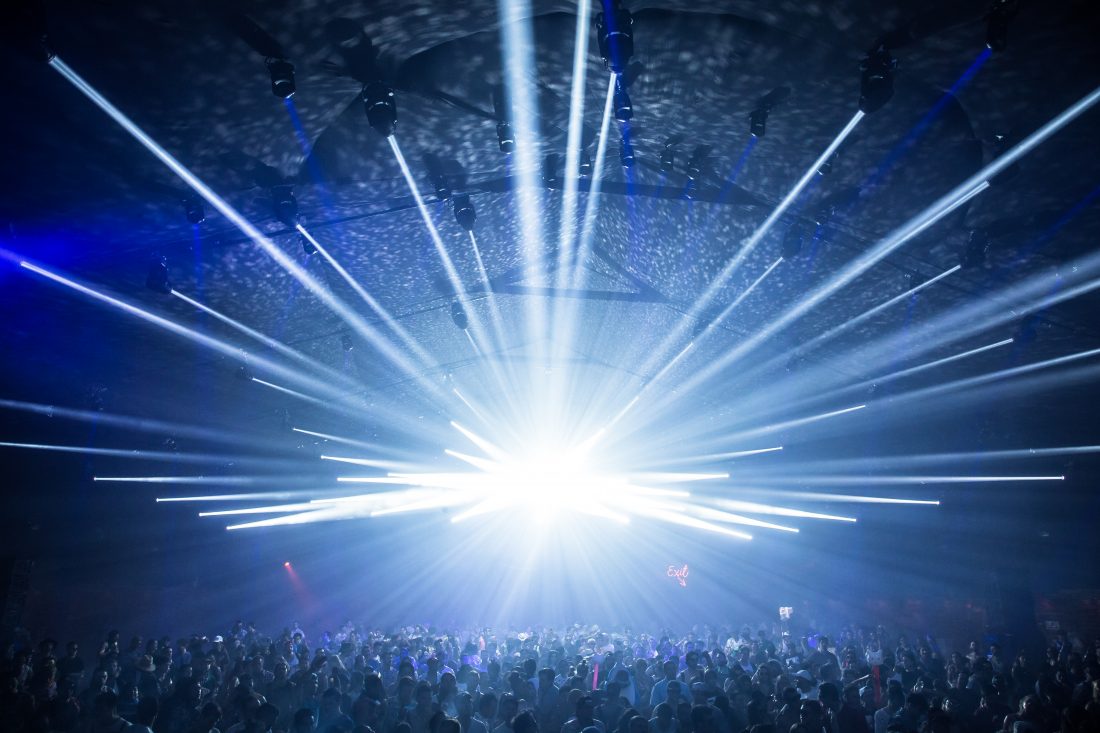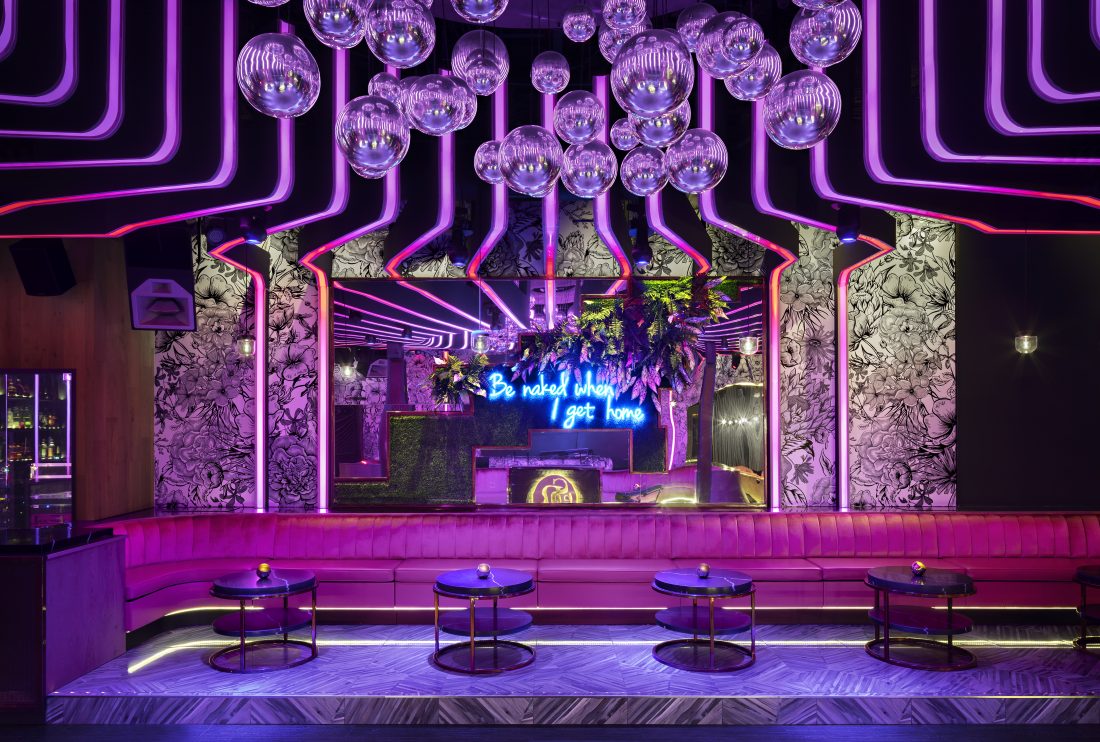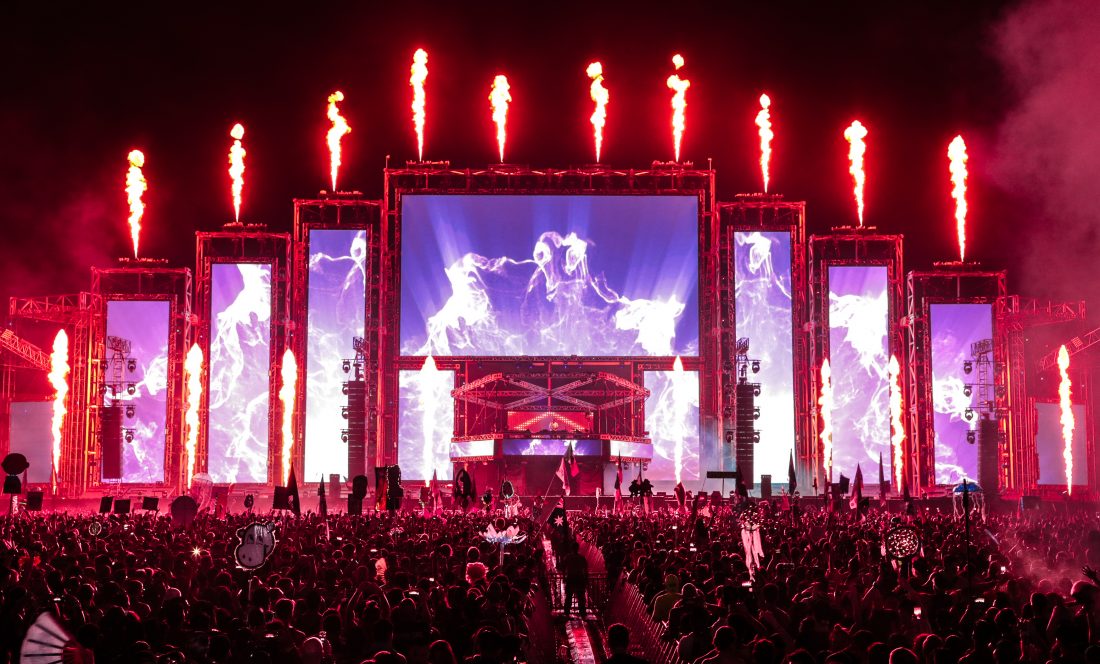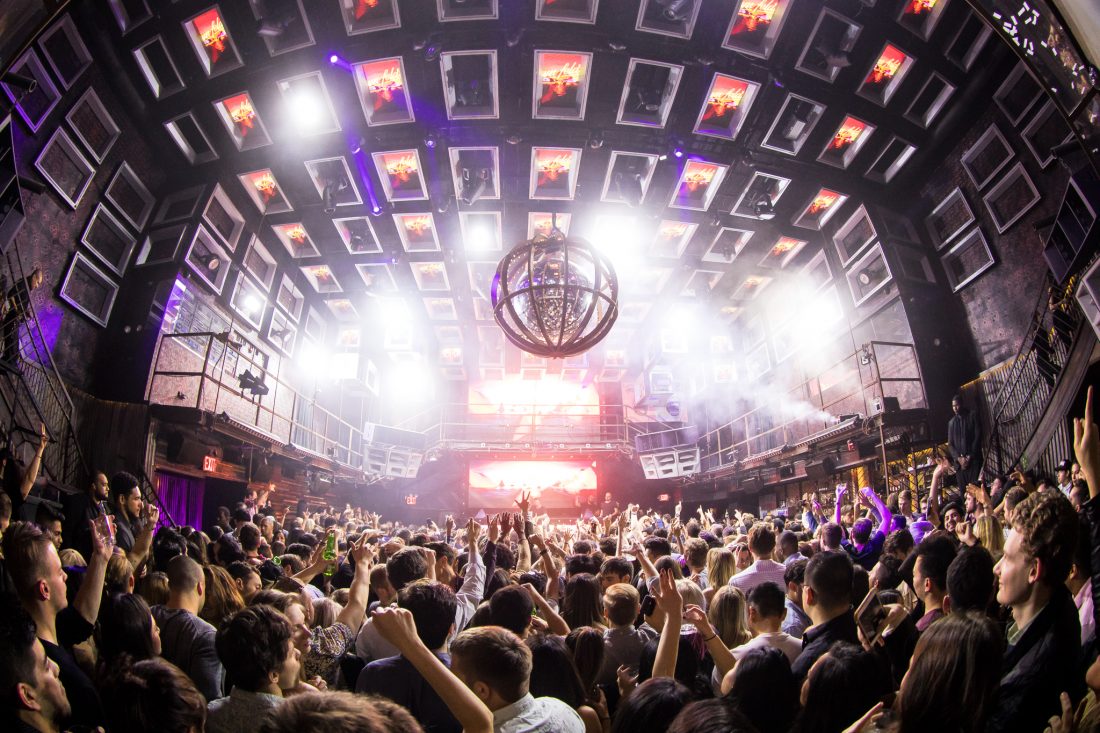An Interview With Steve Lieberman: Founder of SJ Lighting
By Harry Levin | EDM Maniac
April 12, 2019

In the world of nightclubs, concerts and festivals, production (that is the lights, stages, structures and special effects) plays a paradoxical role.
On the one hand production is what defines an event. If a festival is branded as "big", that is almost always a reference to production; to grand stages with enormous mega-structures and hundreds of lights. Many of the same artists who play "big" festivals like EDC Vegas and Coachella play "small" festivals like Day Zero and Desert Hearts, which maintain that diminutive status because of decreased production.
On the other hand production plays almost no role in creating buzz around an event. Practically no attendees know the names of the production designers, the board operators, the crew chiefs and all the other people on the production side despite the fact that they enjoy their creations almost as much as those of the artists who convinced them to buy a ticket.
Worldwide fame and notoriety is rarely found at the end of a career in production, and so to succeed in that field one must adopt a pure love of the craft before anything else, which is something Steve Lieberman, owner and chief designer for SJ Lighting, has maintained for decades.
If you've been to an Insomniac event in the last few years, you have enjoyed Steve's work. If you've been in the Yuma tent at Coachella, you've enjoyed Steve's work. But you might have also seen his work in small nightclubs like Cabana Palms in Bakersfield because for Steve it's not about size, it's about working with good people who do what they do with love.
We had a chance to speak to Steve about his over 20-year career to discuss his continuing passion for the scene, his goals for the future and the next big thing in technical production.

HL: As a lighting designer what is your goal? How can you tell that what you've created is enhancing the performance to its full potential?
SL: Well I would say as a lighting designer, production designer, whatever the role that we're assuming for that event, it's all about the audience experience right? So as an audience member you want to come and get wowed. You want to come and get that full-on experience; that electrifying moment or moments. Really it's a series of moments, so as a designer we're trying to create these environments that allow us to tell a story throughout the course of the event, throughout the course of the show, so that [our design] gives us a lot of tools in our toolbox to delineate from song to song, from artist to artist, to stack looks, to do builds and breaks similar to the way the music builds and breaks. We need to be able to follow that ebb and flow of the musical journey with the visual journey as well. So that's the goal, philosophically, when it comes to design and development.
HL: In addition to serving as lighting designer you also serve as the light operator for many of your productions, which are two very different positions. What is it that you enjoy about each of those differently?
SL: They are a symbiotic relationship, being a designer and being an operator. There are designers out there who have never been behind a console, and that's OK. And there are guys behind a console who have never designed anything. But when you can actually tie the two of them together it gives you a better understanding, at least from my perspective, as to what the delivery needs to be for the show. So whilst design is fulfilling, and you can come up with creative ideas, if you don't truly understand how to execute them from an operators point of view you might find yourself in some areas of deficiency because you don't necessarily know that to get these big looks. You may need to hang the fixtures in a certain orientation or it might make better sense to use fixture A-type instead of fixture B-type. So having that understanding of standing at the console and being in control of the system gives you, I think, a little bit of added experience when it comes to laying it out.
Also there's nothing more fulfilling, really, than designing and building a stage and then actually having your hands on the controls and running it. It's like building a Ferrari and then letting someone else take it around the track. Well that kind of sucks right? So the same rules apply. We do a design out here, and we want to get our hands on it. We understood when we were designing it what the philosophy was and what the mentality was, the direction we want this to go and how we want it to look. Who better to execute that vision than either myself or somebody who works for SJ Lighting?

HL: Your last year working with Ultra Music Festival was in 2017. Are there any new events you've taken on in the last two years that are similar in size and scope that you hadn't done prior?
SL: We do a lot of the primary work for Insomniac. That keeps our schedule pretty full in addition to doing Coachella, Lollapalooza, and then we have some smaller brands that we support. Just design-wise alone for production and stage designs were still producing 70 or so stages a year with stage designs. So we're equally, if not more busy than we were with Ultra, and when I did tell them "have a nice day" obviously there was a little bit of concern. "OK. What do we do? That was a lot of work every year," and I would say by the time I woke up the next morning that gap had been filled.
HL – That just says something about your reputation. People find out that you have that opening in your schedule and they contact you to fill it. You don't have to do the searching.
SL – I appreciate that. I have staff, and I try to surround myself with good people. We want to work hard. We try to be diligent and we try to give back to our own industry and support and perpetuate everything that's going on, and I think that comes back around. As you're practicing your trade it gets recognized. So we work very hard at that and we try to do good shows, and I'm glad that the rest of the industry and the audience appreciated it and recognized it and we are appreciative on the same side. Towards them, towards our industry colleagues and towards the audience because as a creative, and running a business on creative, it's a mental challenge every day. So not only balancing managing your clients, or moving clients in, or moving clients out like with Ultra, but also on top of that stress of running a business you have that stress of doing creative and putting you artwork and your heart and soul out there to then be judged. Because everything we put out there, everything we design, is being judged by thousands and thousands of people. And if you put out one bad design I promise you you'll get some feedback on that. They won't mention the thousands of designs you've done previous in your career that they love, but they will certainly harp on the one that looks like shit.
HL: Unfortunately that's the way of the world for any artistic field. It's like a musician who puts out ten great albums and then one bad one. From then on you're the musician who made one bad album instead of ten great ones.
SL: It just the nature of the business, and hopefully you know that getting into it. But it is hard for not only myself, but for any artist, creative or designer. Whatever your title may be. When you're putting your designs out there and somebody who doesn't do any designs, but pays your bills is judging your stuff; it's a hard pill to swallow sometimes. You've got to grow a thick skin when it comes to working in that trade.

HL: Moving on to the more technical side, these designs involve so many different moving parts. There are the lights, the screens, the structures and so much more. As a designer what aspect of these designs do you like working with the most? I read you designed the megastructure at EDC which is an enormous addition to the stage that many jobs don't involve. So in terms of the technical aspect what makes you the most excited?
SL: I love monolithic design. Large format elements. I think that reads more with an audience rather than deconstructed details, but it really depends on the job. No two jobs are the same. You can't do a broad stroke across the industry and go, "this is what it should be, and this is the new technology that defines what's going on." I approach it differently. Technology feeds and supports a design, but the design is not based on technology. It's the application and execution of your ideas and concepts and philosophies and your protocols; your sketches; what you want to do; your idea that you put down on paper. It could start as just a scribble on a paper, and you go "OK how do I do this?" Well in order to do this, maybe we do this in video. Maybe we do this in structure to create this geometry; to create this environment. Maybe it's an inflatable. Maybe it's flats against scaffold. It's the tools of the trade right? So screens, structures, moving lights. Whilst those are critical to producing your show, for me it's a secondary item to the design.
Most of our designs literally start off as sketches on pencil and paper (my desk is cluttered with them). Then I'll sketch on one of my tablets to where I can use mirror tools to see what it looks like more accurately rather than trying to sketch two sides of the drawing. Then from there we start moving into modeling and drafting programs, and then start developing it into something else. There are ten different pieces of software that we have in our office to articulate ideas. So that's the procedure to get an idea out there to even begin to show a client, but it's the design ideas that are really the concepts that keep you driven; that inspire and move things forwards. So, where do you find those and what do you do and how do you find new ones? That's always the constant quandary that we're in. Figuring out what the new idea is, but not necessarily the new product.
HL: You're designing some of the biggest stages in the world right now, so I'm just wondering where do you go from here? What's a new challenge you would want to undertake?
SL: I appreciate that and thank you very much. I am grateful for all the work that we've done; all the work that we're doing. Some of them are really big stages and we also do some really small stages. For us these aren't driven by "We have to do the main stage at this. We have to do the big stage over here". We most appreciate working with good people. Friends. Family. Friends that we consider family. Working on good projects that are innovative; that are creative and just enjoyable experiences. We want to leave a legacy. We want to do things with other designers that are collaborative; that feel good. As a designer I don't want to work in a vacuum by myself. I want to be with other creatives, and we want to do stuff. Is there a time and a place to be in the studio by yourself, in the zone doing design work? Of course there is, but at the end of the day, when we're producing the show there's a host of us who are all together. And that to me is more meaningful than needing to do a bigger stage. For me it's not going bigger, it's doing things that feel good. We're fortunate in the fact that we can be a little choosier about who we want work with, so in that instance we are a little pickier about the clients we take on because we want to work with clients, and it's not about the money that they're trying to spend, it's about the philosophy of what they want to produce, and why they want to produce it.
For example, we design night clubs as well, and we did a little club in Glendale called "Giggles" which has probably been around twenty years. A father and son own it, and the son called me one day and he was like, "Hey Steve I know you build clubs, and we want to redo the basement. This is probably way too small for what you want to do," but he started talking to me, and he was so excited about what they want to do, and his energy was so positive that I didn't really care what the dollar was for this gig. We wanted to design his place. These are the people we want to be with, and these are the kinds of jobs that we want to do because there's more to it. We want the human element in there. We want the relationship with the client; with the audience experience. We want that energy. That's what we want, so that's where we're going. We're trying to evolve into something more collaborative with our audience and our clients and our colleagues.
HL: At the end of the day, that's the attitude you want everyone to have in the arts. For the love of the art rather than the love of the money.
SL: I'm going to be 47 years old. I've been working in nightclubs since I was 15, professionally since college. When I first started doing this particular work in dance music and nightclubs, other people in the lighting and production industry looked like at my side of the world like I just got a disease. Nobody wanted to touch it. Nobody wanted to deal with you. This was not the side of the industry that was worth anything and what you're doing is garbage and you're a joke. Now fast forward to today, dance music and festivals are outrunning every other part of the industry to where there's huge dollars in it. We've grown exponentially with the industry because we've been in it before it was the cool thing to do. Now all of a sudden even the rock and roll designers who used to tell me I was an idiot and ask why I would work for nightclubs and raves now all of a sudden they want to stretch their wings out and come into this world. The difference is if you don't understand the sociology of what this industry is, it's harder to deliver a show to the audience. I'm not saying that you can't, but it's a more cohesive experience for the audience if the designer understands the musical genre. How the kids behave at these shows. The different sociology from genre to genre as well because the drum and bass crowd is very different than the techno crowd, is very different than the main stage, top 40, poppy, Marshmello music crowd. I'm not judging anyone for liking a specific artist, but if you go into the dark techno area, you're going to see a very different kind of vibe and feel a very different kind of vibe as opposed to going and watching Marshmello on the main stage.
HL: You've mentioned that you've been working in nightclubs since you were 15. You were very passionate then and you're clearly very passionate now. Do you think you're just as excited about the scene today as you were when you first started?
SL: The short answer is yes, and I would put it to something like this. Years ago, I had a friend who said there are three things you can have in life when it comes to your profession. You can have a job. You can have a career. Or you can be like one percent of the population and have a calling, and if you're that blessed to have a calling, you'll never work a day in your life.
I think that I truly am blessed and found my calling fortunately very early on, but it took a lot of work to get there. It's been twenty years of working and I'm still figuring it out. It wasn't always a successful place to be, but it's always something that I've been passionate about, and something I've always been interested in and I'm just very blessed that this industry turned into something and grew exponentially from the subculture to this mainstream environment where shows did 5000 people to where shows now do 100000 people. That would be where it is as far as how I feel about the industry. I'm exactly where I'm supposed to be and I'm equally, if not more passionate about it now because I have a wider perspective as to what the industry is now. I'm appreciative of the work that we've done. Appreciative of what he community really is. Listen there's good, bad and ugly in every industry, but I try to see the positive in most of and embrace that and any of the negative stuff I just try to ignore it and just stay on the path.
HL: If there was any artist you could work with living or dead that you could work with who would it be?
SL: Well the two artists that I miss that I wish were still here because they're music had huge impacts on me from my early years up until the time that they left this earth and that would be Peter Rauhofer and Frankie Knuckles.
